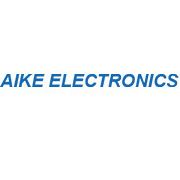Pesquisar na Comunidade
Mostrando resultados para as tags ''used''.
Foram encontrados 3 registros
-
USB Type-C, also known as USB-C, is a universal serial bus (USB) hardware interface form. the largest in appearance is that the upper and lower ends are completely consistent, and the USB is no longer distinguished compared to Micro-USB. The USB Type-C specification 1.0 was published by the USB Developer Forum (USB-IF) and completed in August 2014. It is basically the same as the USB 3.1 specification. But USB-C is just a port that doesn't necessarily support USB 3.x or power transfer (many phone types -C still use USB 2.0). Since the release of the USB-C specification in 2014, many new Android mobile devices, laptops, desktops and even 3C devices, such as game consoles, please start using this connection port. Windows 10 itself supports USB Type C. The USB-C port is 8.3× 2.5mm in size, which is smaller than the current USB port on PCs, but slightly larger than the 6.85× 1.8mm microUSB port, which is 6.85× 1.8mm in size. As for the power transmission specification, the wire standard is 5V, 5A, and the connector is 3A. The additional design of the device required Type-C due to incompatibility with any existing Type. The world's first source of USB 3.1 main control terminals and device terminals was presented by ASMedia at the Annual Conference in 2014. In an interview, Brad Saunders, chairman of the USB 3.0 Enablers Group, said, "While USB technology is the most popular for connecting devices and charging devices, we still recognize that we need to develop a new joint to meet the evolving trend. For example, progression size and availability. The new USB-C connector will meet the needs of the market and lay the foundation for future USB versions. " USB-C is designed as the ultimate universal connection. Its size allows it to be used on computers and mobile devices. The design also allows you to use not only the USB 3.1 protocol but also Thunderbolt 3 and DisplayPort. This means that you can do all the content of USB-C via USB-A and USB-B, but you can also connect powerful peripherals (such as GPUs) and display them on USB-C ports. USB Type-C is still quite new and has not yet been incorporated into most of the devices we use on a daily basis. Right now, you'll only find USB Type-C in Apple MacBook computers, some Chromebooks and other newer laptop models, and some flash drives. It is also used on the Nintendo Switch game console. If you want to find Type c Contacts Supplier in china, please contact us.
-

em análise CCE NCV-5DH8FSATANDART L41II3 AND L41II4Warning - 0251: System CMOS Checksun Bad - Default configuration Used
ROBERTORCP postou um tópico em Notebook's
-
- ncv-5dh8fsatandart
- l41ii3
- (mais 8)
-
Electrolytic capacitor 1000UF25V long life LOWESR 105° switching power supply inverter commonly used super capacitor This capacitor is rated at 1000uf and 25V. 1000uf 25v Capacitor indicates electrostatic capacity of 1000uF, while 25V indicates voltage of 25v. The 1000uf25V radial electrolytic capacitor has high reliability and long life, and is commonly used in power supply circuits as filter capacitor. When we buy capacitors, the higher the capacitance is, the better it is, it is enough to meet our use. SHDR® Application Notes Reverse voltage causes short circuit breakage of the capacitor or leakage of electrolyte. Where the polarity in a circuit sometimes reversed or unknown, a bi-polar capacitor should be used. When you use aluminum electrolytic capacitors, remember the following: 1. Polarity Regular aluminum electrolytic capacitors has polarity Reverse voltage causes short circuit breakage of the capacitor or leakage of electrolyte. Where the polarity in a circuit sometimes reversed or unknown, a bi-polar capacitor should be used. 2. Overvoltage Do not apply overvoltage continuously. When overvoltage is applied to the capacitor, leakage current increase drastically. Applied working voltage to capacitors should not exceed the rated working voltage of capacitor. 3. Operating temperature and life Do not use the capacitor over the max operating temperature. Life time of the capacitor depends on the temperature. Generally, life time is doubled by decreasing each temperature 10℃ Use temperature as low as possible. 4. Vent It is recommended at least 3mm of space around the vent. If such space is not provided, the vent will not operate completely. 5. Ripple current Do not apply a ripple current exceeding the rated maximum ripple current. Applying too much ripple current to the capacitor causes great heat generation, invites deterioration of properties of causes breakage. Please consult factory if ripple current exceeds the specified limit. 6. Charge and discharging Frequent and quick charge/discharge generates heat inside the capacitor, causing increase of leakage current, decrease of capacitor, or breakage occasionally. Consult us for assistance in this application. 7. Storage When the capacitor is stored for a long time without applying voltage, leakage current tends to increase. This returns to normal by applying the rated voltage to the capacitor before use. It is recommended to apply D.C. working voltage to the capacitor for 30 minutes through 1kΩ of protective series resistor, if it is stored for more than 6 mouths. The capacitor should be stored at a normal temperature and humidity. 8. Soldering Improper soldering may shrink or break the insulating sleeve add/or damage the internal element as terminals and Lead wires conduct heat into the capacitor. Avoid too high a soldering temperature and/or too long a soldering time. 9. Mechanical stress on the lead wire and the terminal Do not apply excessive force to the lead wire and the terminal. Do not move the capacitor after soldering to the PC board, not carry the PC board by picking up the capacitor. For their strength, refer to JIS C-5141 and C-5102. 10. Cleaning of boards after soldering If the capacitor is cleaned in halogenated solvent for organic removing solder flux solvent, the solvent may penetrate into inside of capacitor, and may generate corrosion. 11. Sleeve material The standard sleeve material is polyvinyl-chloride. If exposed to xylene, toluene, etc, and then subjected to high heat, the sleeve may crack. This sleeve is not insulating material. 12. Micon's Products meet or exceed quality standards specified by JIS-C5141W and with the reliability requirements refer to JIS-C-5102. More information please visit here.
-
- electrolytic
- capacitor
- (mais 12)
SOBRE O ELETRÔNICABR
Técnico sem o EletrônicaBR não é um técnico completo! Leia Mais...



